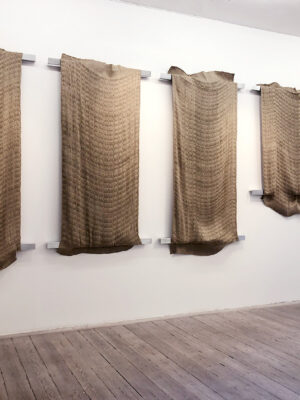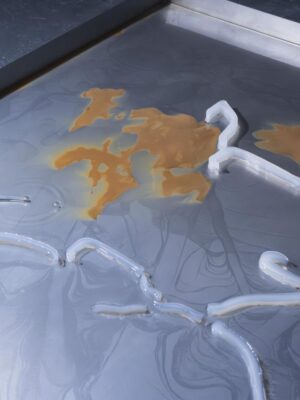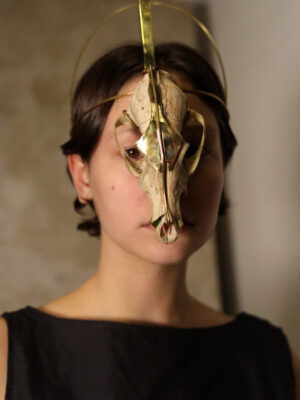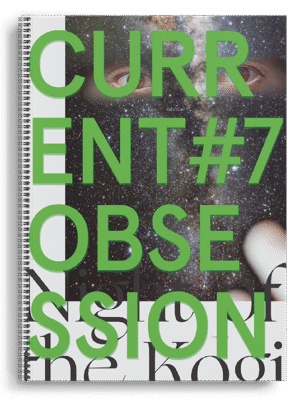The two artists talking to each other are painter Sofia Heinonen and textile artist Sara Elggren. Captivated by the elegance of the tapestries, the scale and quietness invite a closer look, driven by the urge to feel and touch them. Sara Elggren is a Sweden-based textile artist, but most importantly a very skilful weaver. Her craft conceals a great deal of technical knowledge with subtle narratives. A weave of various unknowns is approached with curiosity for the unexpected, challenging the senses and letting the eye rests on the complexity of the intricate textures and patterns. Elggren compares weaving to language, a set of hierarchical rules and instructions that form particular combinations resulting in particular outcomes, much like mathematics or music. Her creative process is a constant flow between fixed and intuitive methods.
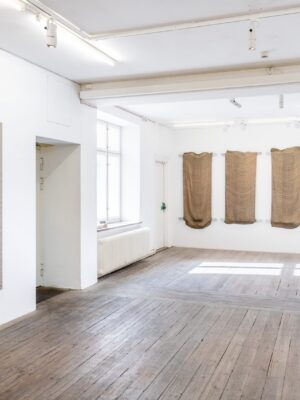
Rather than a specific story, Elggren weaves a set of clues open to interpretation. She understands that whatever she sees and expresses through her hands won’t be perceived the same way by onlookers. The evocative clues laid out through the meticulously layered threads are meant to allow the mind to wander and to keep viewers in a world of wonder, at least for the time being.
too is a series of objects woven in a repeated bind, in which the warp of each weave is divided and dyed in sections, and the weft beaten loosely. Where threads are interchanged, a soft blur of colour is visible between each beat. too is part of a body of work made in relation to concepts of weaving notation, the graphical interface that expresses how the threads in a weave move over and under each other. A weaver relates to weaving notation much as a musician relates to musical notation: the notes make a woven idea possible to preserve, distribute or recreate; they compress large amounts of information, provide an overview, and carry precision in their mathematical and aesthetic form. They are based on zeros and ones, a fairly simple system. The notation can also be seen as a spatiality of its own, with its x and y axes and the grid created between them to fill a void through which time and bodies are choreographed or generated.
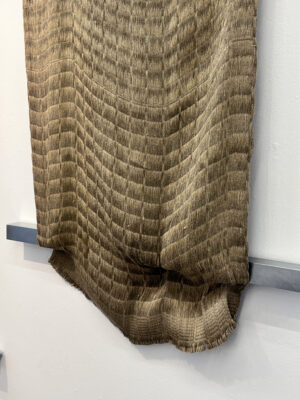
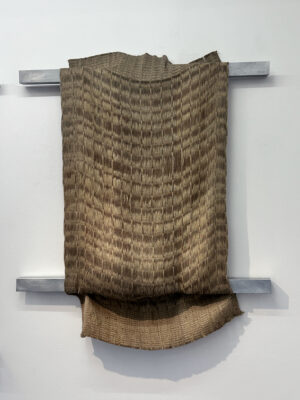
‘Exhibiting weaving is always met with the question of how the work is to be used, as a curtain or a tablecloth. But such questions arise in other media too—what something is, or what it’s for.’
Reflecting on the ‘too’ exhibition, Sara points out, ‘Exhibiting weaving is always met with the question of how the work is to be used, as a curtain or a tablecloth. But such questions arise in other media too—what something is, or what it’s for. That can be an interesting question in itself, if you want it to be.’¹
Pointing out the important parts of the weaving process, Sara continues, ‘Working with weaving, for me, is also a lot about trying to grasp different weave bindings in order to do something that I think I want to do. It might then take time to understand things that are mathematical or grammatical, at least for me, but as with most constructed systems, once you do understand, something opens up in front of you: individual signs become larger images and allow something new that makes sense.’²
In the subtle textile world of Sara Elggren, there is something for everyone to discover. Yet, as Elggren admits with a smile, a large part of her practice is intended to challenge the viewer. That tension between invitation and provocation lies at the heart of her art, asking each of us to engage more deeply, to question our own perceptions and to seek out meaning beyond the surface.
¹ Ashik Zaman, ‘Intervju med Sofia Heionen och Sara Elggren’, SKF/KONSTNÄRSHUSET, April 2025, https://konstnarshuset.org/wp-content/uploads/2025/04/Intervju-med-Sofia-Heionen-och-Sara-Elggrenny.pdf [accessed 7 July 2025].
² Ibid.
Discover more of Sara Elggren’s work here or at her solo exhibition at Jakobsbergs Konsthall in Järfälla, Sweden, in 2026.
